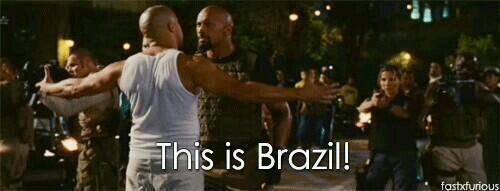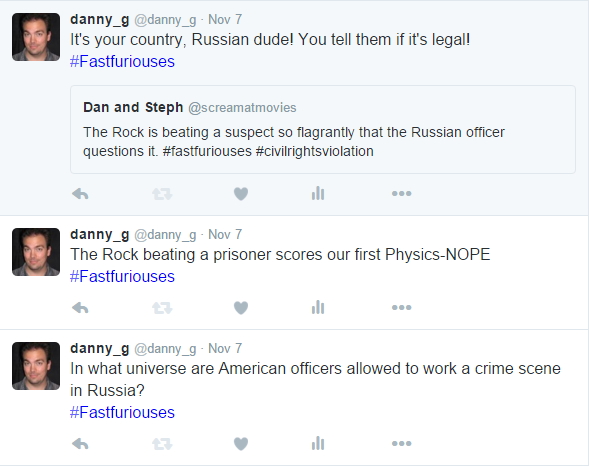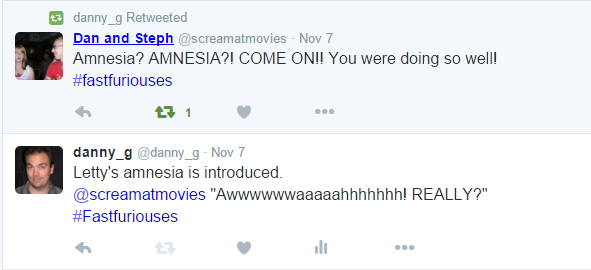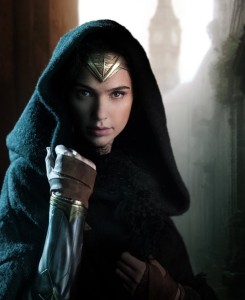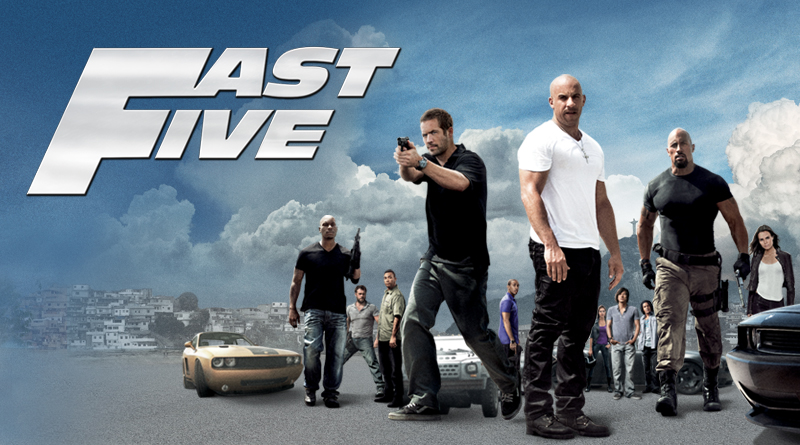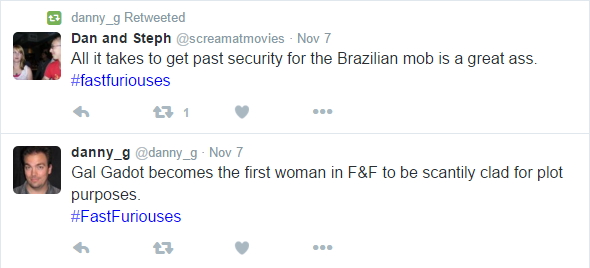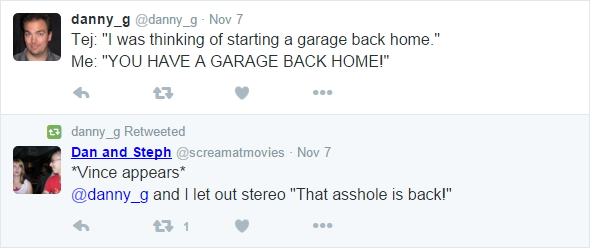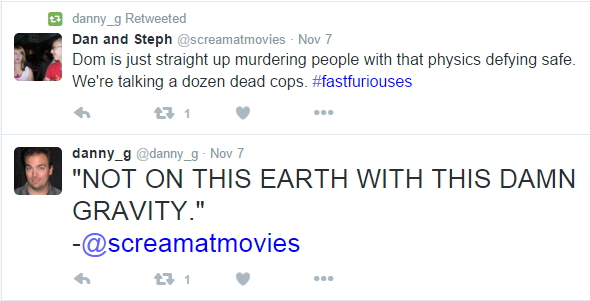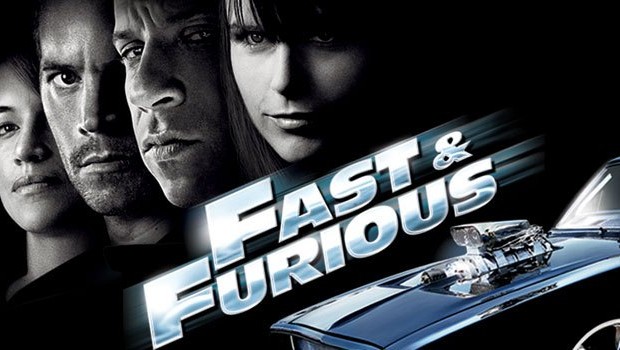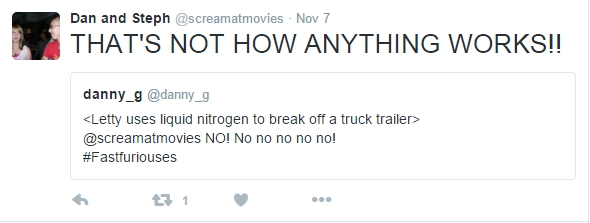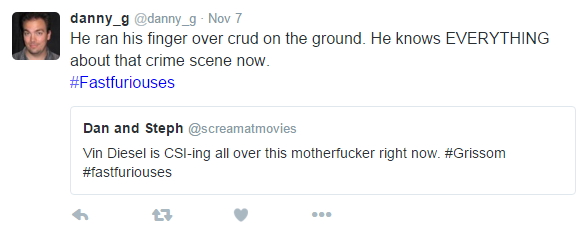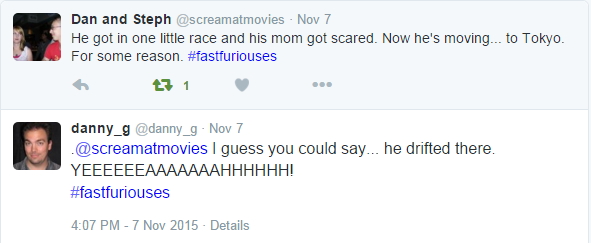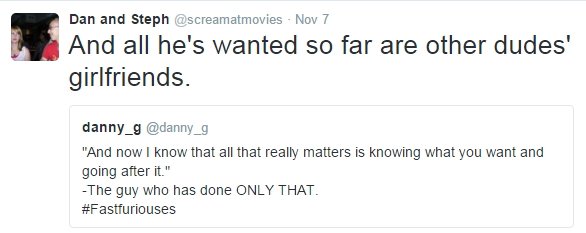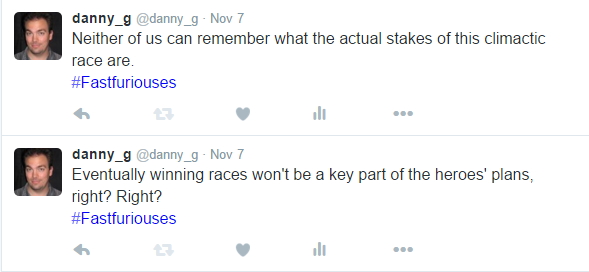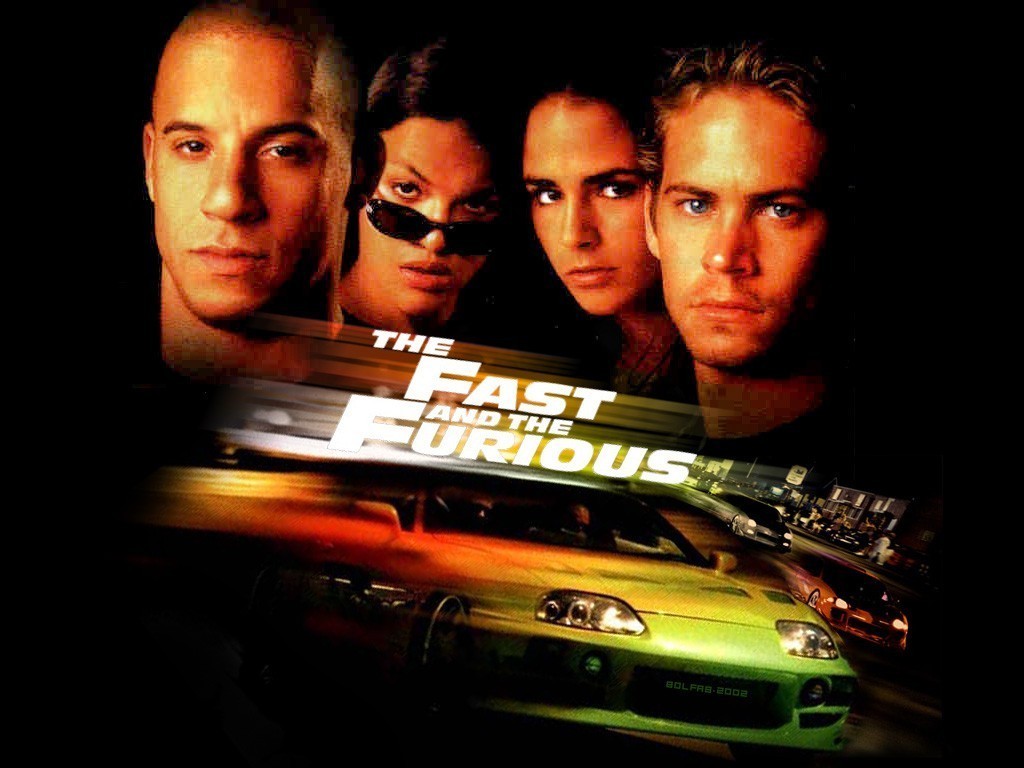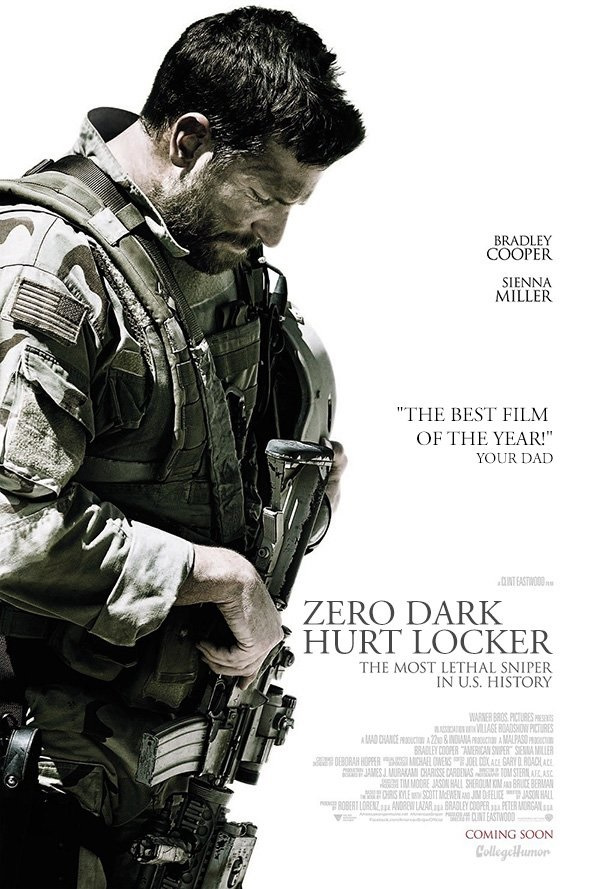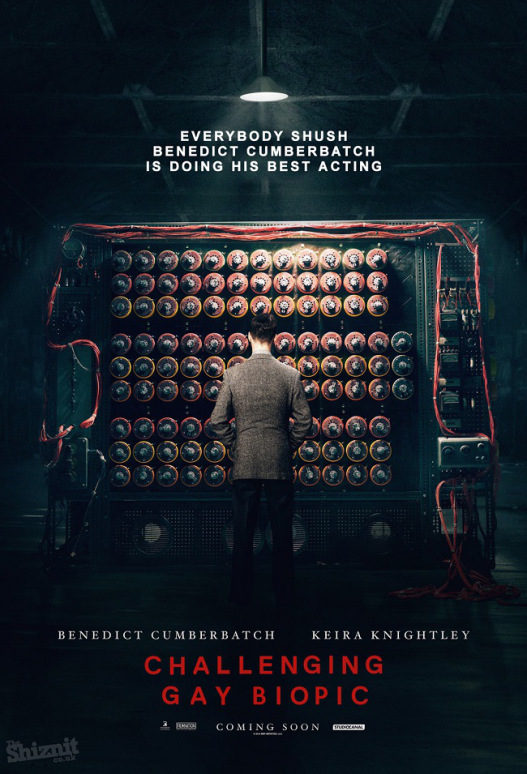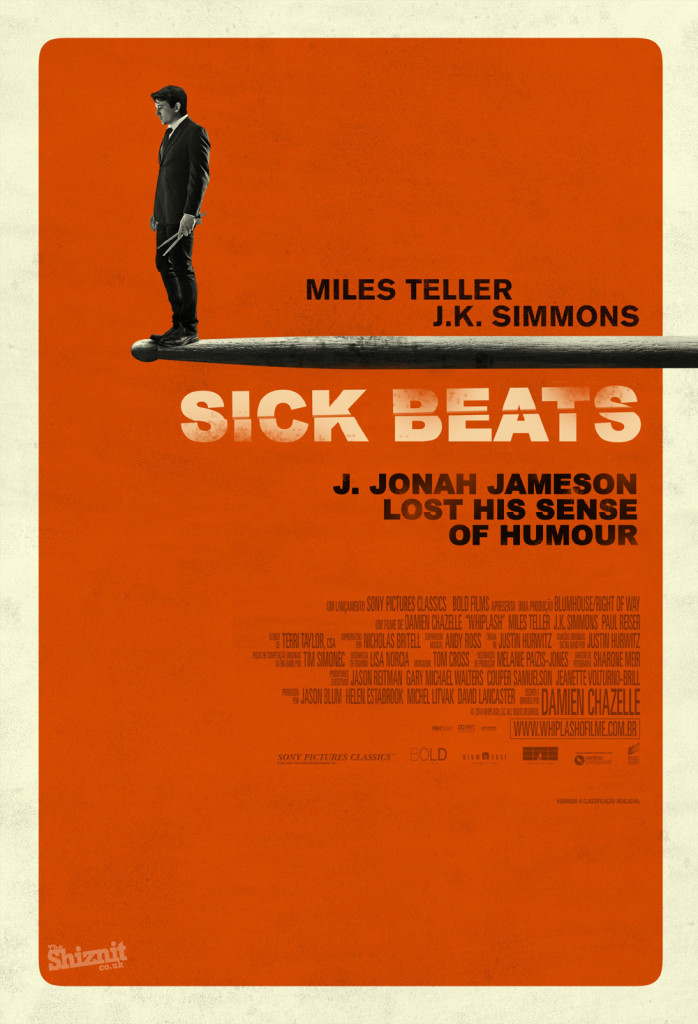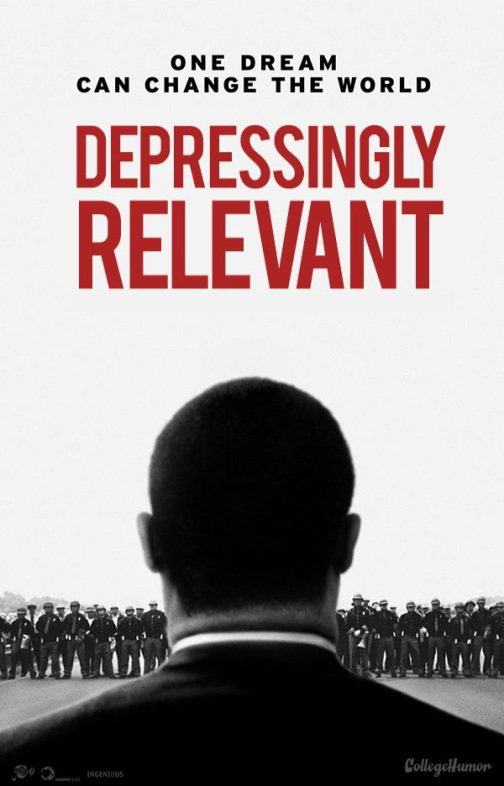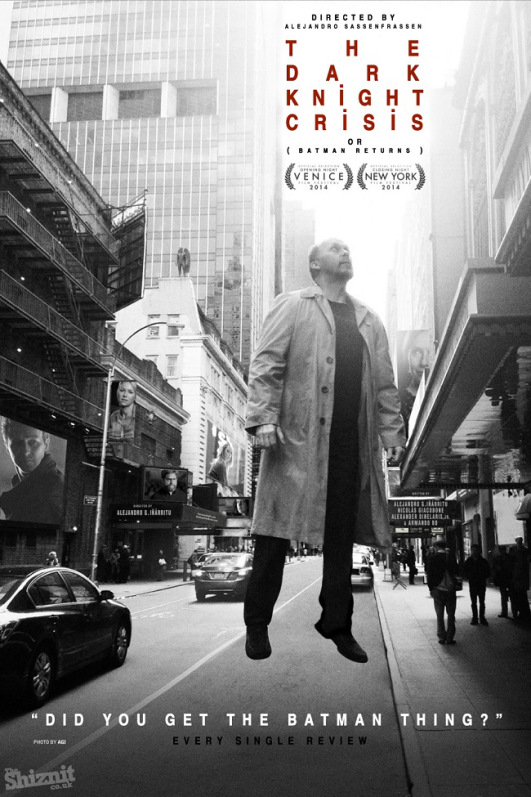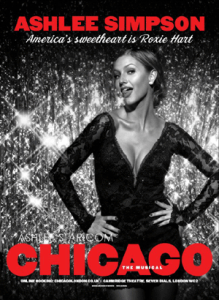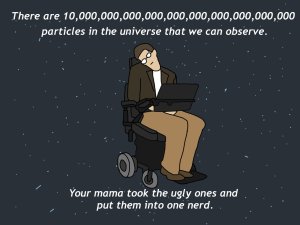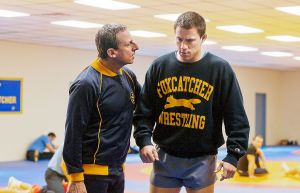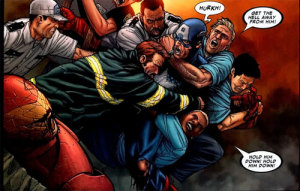Hello readers. I return, and apologize for my absence… although, one could argue that there is an amusing symmetry in going from writing about the adventures of Dominic Toretto’s Fast and Furious family to discussing the eight films that the Academy of Motion Picture Arts and Sciences has chosen to claim were the year’s best.
A claim that grows more dubious the more we look at their storied history of blown calls, and the entire genre of movies that’s sprung up whose sole purpose seems to be pandering to the Oscars, but… eh, what can you do.
Let’s look at this year’s nominees, in my personal order of preference. And because I’m me and that one scene of Birdman really stuck with me, I’ll also be tracking how many superhero/Star Wars actors are trying to do something of substance in between tentpole flicks.
(For even quicker descriptions, check out this list of honest Oscar posters)
8. National Lampoon’s Vengeance Vacation
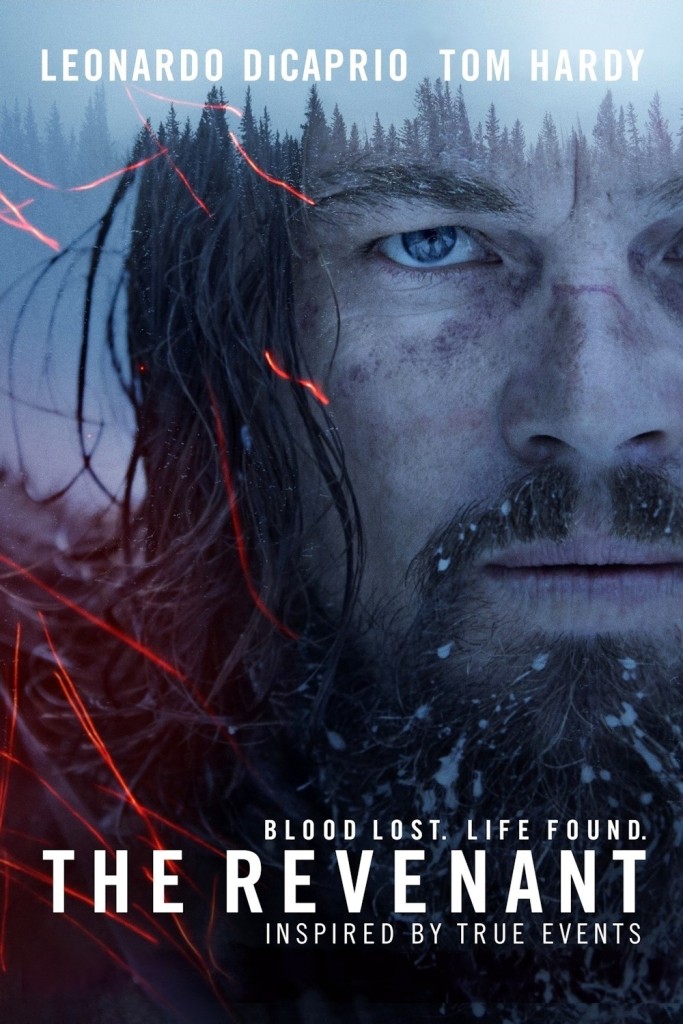
In a nutshell: When a fellow trapper kills his son and leaves him for dead, Hugh Glass (Leonardo diCaprio) must overcome his horrific bear-related injuries, a harsh environment, and a band of natives on their own vengeance quest, in order to find and punish his betrayer.
Featuring: Bane, General Hux
A lot has been made of how this movie was shot. How Alejandro Iñárritu insisted on using only natural light to shoot (meaning some shoot days lasted an hour and a half), how Leonardo diCaprio actually did eat raw bison liver and swim in freezing rivers, and so on and so on. Here’s the thing about that, though… none of that is the narrative. It’s the meta-narrative. It’s fuel for the DVD special features, not relevant to a discussion of the film’s quality. Using exclusively natural light resulted in a lighting effect I would describe as “adequate, not exceptional.” Tell me “Leo actually did all of those things,” and I’m going to point you to his five stuntmen. He actually ate raw liver? He was lying two feet from a fire and had, in fact, eaten that day, so from a narrative perspective, nobody needed to eat raw anything, especially if doing so was just going to make them throw up.
Also, saying “When Glass throws up after eating the liver, that was Leo’s authentic reaction…” well, that isn’t acting. It’s reacting. If diCaprio deserves an Oscar for that, then Johnny Knoxville deserved an Oscar for Jackass.
That aside.
Ultimately? It’s a little dull. What few action sequences there are were well-shot, I’ll give it that, but they end up few and far between. The whole thing could be thirty minutes shorter and you wouldn’t miss anything. Watching Glass struggle across frozen tundra for two hours just… gets old.
But at least that’s the worst I can say about it. A little dull. Not “It shouldn’t even be considered a movie” like Tree of Life, not “desperately and annoyingly cloying” like Extremely Loud and Incredibly Close, not “actively evil” like American Sniper. When a character in The Revenant calls the natives (Cree, I think?) “savages,” it’s someone we’re rooting against, not the supposed hero of the movie (looking your way once again, American Sniper), and said natives’ rampage might be horribly misguided, but it’s for good reason. They’re trying to recover one of their women who was kidnapped by white men… sadly their strategy of “murder every white man we encounter and hope they’re the right ones” is just god-awful.
Still though… eight nominees, and the weakest one is just dull. Normally I’d be angrily questioning why certain films had been nominated for a while yet, but not this year. #OscarsSoWhite aside (and not having seen Tangerine, Beasts of No Nation, or Straight Out of Compton, I can’t really speak to that)… not a bad crop.
7. SUCKER! You learned stuff!
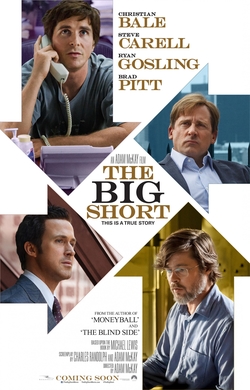
In a nutshell: Several finance industry outsiders see the impending collapse of the US housing market, and risk everything by betting against the American economy. And if you’re not careful, you just might learn something.
Featuring: Batman, and a cameo by Harley Quinn
Here’s what I respect about The Big Short. They are really trying very hard to hoodwink mainstream American audiences into learning how the 2008 economic collapse was caused through corruption and fraud on the part of the banks. They lure you in by telling you it’s a movie from the director of Anchorman and Ant-Man and a cast including Steve Carell in a wig that’s about a group of misfits finding a way to screw over the big banks.
That’s not what happens, by the way. If you recall, when the collapse did finally happen, the big banks (or at least their top executives) managed to be some of the only people not screwed over.
What this movie actually is, is the story of how a select few largely unconnected people managed to see that the housing market was a bubble, and that it was on the verge of bursting. Along the way, they walk us, the audience, through the steps involved in the housing market collapse. Whether it’s by having Mark Baum (Steve Carell) and his team investigate the actual houses involved in the mortgage-backed securities (many of which were given perfect ratings, but were clearly filled with mortgages on the verge of foreclosure), or by having frequent narrator Jared Vennett (Ryan Gosling) literally say “This is all really technical and kind of boring, so to explain, here’s Margot Robbie in a bubble bath.” And then yes, Margot Robbie explains sub-prime mortgages to you while sipping champagne in a bubble bath.
The result is a harrowing if still entertaining look at how corporate greed caused a global economic meltdown. The frequent fourth wall breaks, both celebrity cameos to explain the more technical issues and characters addressing the audience to explain how they’ve stuck to or deviated from actual events, help to keep the story engaging. And that’s good, because it’s a super important story that not enough people understand.
Honestly, it would be much higher on the list, except for one little thing. Christian Bale plays Michael Burry, the hedge fund manager who first identified the housing bubble, and was the first to bet against the housing market. He leans fairly heavily into playing Burry as somewhere on the autism spectrum (though not, like, Sheldon Cooper-level, just a certain amount of inability to interact with people or conform to societal norms), which makes him almost seem to be in a completely different movie than anyone else. And that would all be fine, but once his fund starts to lose money because he’s put everything into his bet against the banks, Burry’s plotline loses all momentum. There is nothing happening with him that isn’t also happening in a more engaging fashion with the rest of the cast, and every time they cut back to him (which is somewhat frequent), it’s dead air. Revenant aside, which was heavy on dead air, no other film on the list has that problem, so Big Short gets knocked down a few pegs.
6. No, not The Room, thank you

In a nutshell: Joy and her son Jack live in captivity, Joy having been kidnapped two years before Jack’s birth. When they finally manage to escape, both must adjust to life outside of the small shed known as Room, the only place Jack has ever known.
Featuring: The Shoveler
The opening of Room is a fairly successful blend of sweet and horrifying. Sweet from the bond between Joy and Jack, horrifying from the fact that they are imprisoned in a shed by Joy’s kidnapper/rapist/abuser, who… goddamn. Does that monster ever work as a perfect depiction of male entitlement’s worst case scenario. “I deserve love and sex, so I will keep a woman prisoner so that I can demand both of those things from her at my convenience.” Ugh. UGH.
Moving along.
After the highly tense sequence leading to Joy and Jack’s escape, we shift gears, watching Jack try to adjust to an alien world: so many people who are neither his mom nor the “imaginary” people he’d see on TV (yes, they had a TV, which their captor probably demanded all sorts of thanks for, I HATE HIM–sorry), buildings filled with rooms. With Jack as our POV character, every shot of an empty room becomes highly significant. It soon becomes clear, though, that it’s Joy who’s having the most trouble adjusting to life outside, as once she escapes Room, and the day-to-day life of simply trying to stay alive and provide any sort of happy life for her child, seven years of trauma refuse to be repressed.
It’s anchored by impressive performances from Brie Larson and nine-year old Smurfs 2 veteran Jacob Tremblay. It’s definitely worth watching once. Can’t say I’d go back for another round. Well, maybe, if I could… you know, skip to the part where the cops find Jack and figure out where he came from. I liked that part. Even if it involved less of their captor being hunted by Batman than I’d like. No, Daredevil. No, the goddamn Punisher.
5. Spielberg. Hanks. You know you want it, Oscars.
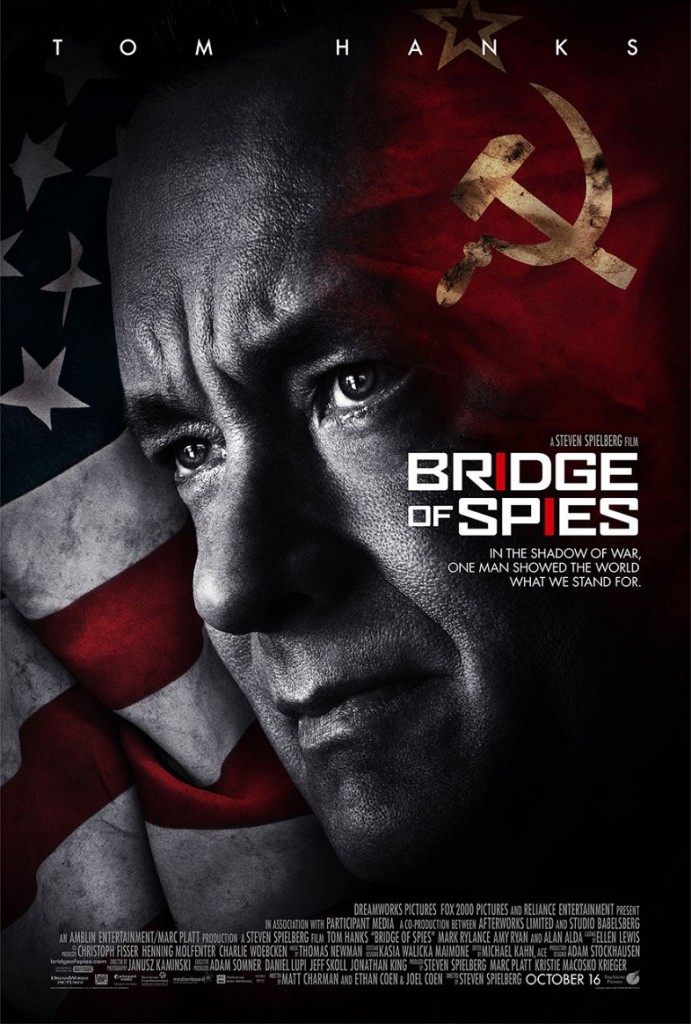
In a nutshell: At the height of the Cold War, an insurance lawyer finds himself negotiating a prisoner exchange between the US, the USSR, and an East Germany eager for a seat at the table.
Featuring: This one’s clean. Two people from The Wire, though, that’s neat.
In 1957, New York attorney James Donovan is handed the least enviable case possible: publicly defending accused Russian spy Rudolf Abel in a country at the peak of anti-communist paranoia. And from there it only gets more complicated… after alienating his family and firm by going above and beyond defending Abel, when an American pilot flying a spy plane is captured by the Soviets, Donovan gets pulled into a prisoner exchange between two superpowers on the brink of war.
And it gets worse for him. An American student studying economics in Berlin waits one day too long to get his German girlfriend out of East Berlin, and gets grabbed on the wrong side of the newly-constructed Berlin Wall. The East Germans see this as a chance to gain formal recognition from the West, and try to hijack the prisoner exchange.
It’s Spielberg’s fourth collaboration with Tom Hanks. Is it their best work? Probably not, but I am awfully fond of Catch Me If You Can. Hanks goes with quiet strength over flashy dramatics, which is the right call, because it’s only that quiet strength that keeps Donovan in the game. And the fact is that at this point, Spielberg’s B-game is, in fact, still Oscar-worthy.
It’s that rare historical movie that not only has awards appeal but doesn’t feel too Oscar-baity. I can picture this movie existing for a reason besides attracting Oscars. Not something easy to say about, say, The King’s Speech, The Imitation Game, or The Reader.
4. NO! SLEEP! TIL–
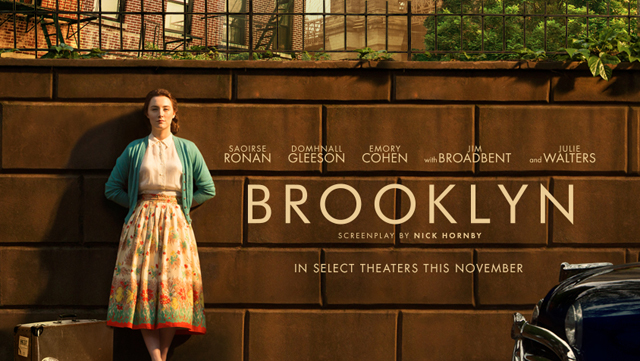
In a nutshell: A shy girl from Ireland tries to build a better life in New York, only to have her home town try to lure her back.
Featuring: General Hux (again, dude’s everywhere all of a sudden), Felicity Smoak
If you don’t come out of this movie a little bit in love with its lead character you’re some kind of robot.
Saoirse (pronounced “Sur-sha”) Ronan plays Eilis (pronounced AY-lish) Lacey in the biggest collision possible of aggressively Irish names lacking any sort of intuitive pronunciation. A timid, traditional girl working part-time in the shop of a horrible, horrible woman, Eilis is sponsored by the church to immigrate to New York in the 1950s. With an entire ocean separating her from her friends and family, she has to forge a new life.
What I appreciate is that they steer towards some of the stereotypes, but then veer away at the last second. Her new boss seems to be a “mean boss,” but turns out to be supportive when it counts. Yes, Ailis stays in one of those boarding houses for ladies that, yes, forbids men and encourages good Christian behaviour, but the landlady isn’t the cruel tyrant of, say, Agent Carter, but the nicest, most accepting, most helpful, still rigidly Christian landlady I’ve seen on TV or film in a while. And the Italian lad hanging around her church’s dances is a perfect gentleman, charming and romantic yet respectful. Probably helps that Italians are often just as Catholic as the Irish.
Now… the second half? I’m not sure I reacted to that the way I was supposed to. When a tragedy causes Eilis to return home for the first time in months, her home town is quick to offer up all the things her new life in Brooklyn had been offering, but in the comfortable familiarity of small-town Ireland. Her sister’s old bookeeping job (which is exactly what she’d been studying in Brooklyn), a charming and handsome fella to spend time with… actually, they’re weirdly quick to offer all these things up. Suspiciously quick. Almost aggressively quick. Quick enough that I didn’t think “Hey, you know, maybe there is no place like home,” but instead reacted to her hometown like we’d entered a horror movie. Every time some new thing made her rethink returning to Brooklyn, I thought “RUN, IT’S A TRAP!”
That said, I had a better time watching the less oppressively dark metaphorical prison of small-town Ireland than the literal and horrifying prison of Room. But that’s neither here nor there.
It’s a delightful, charming, and moving. Okay, sure, elephant in room, a movie about an immigrant of colour trying to adjust to life in the US would be very different, would be considered an “issue” movie from the word go, and would probably get shut out of the Oscars, but… this is still delightful. Also, I saw Domnhall “General Hux” Gleeson in three movies in a matter of weeks and if his nose were less distinctive, I’d have had no idea it was the same guy (let alone the same guy as the excellent sci-fi flick Ex Machina), so, nicely done, that man.
3. Saving Private Ryan… IN SPACE
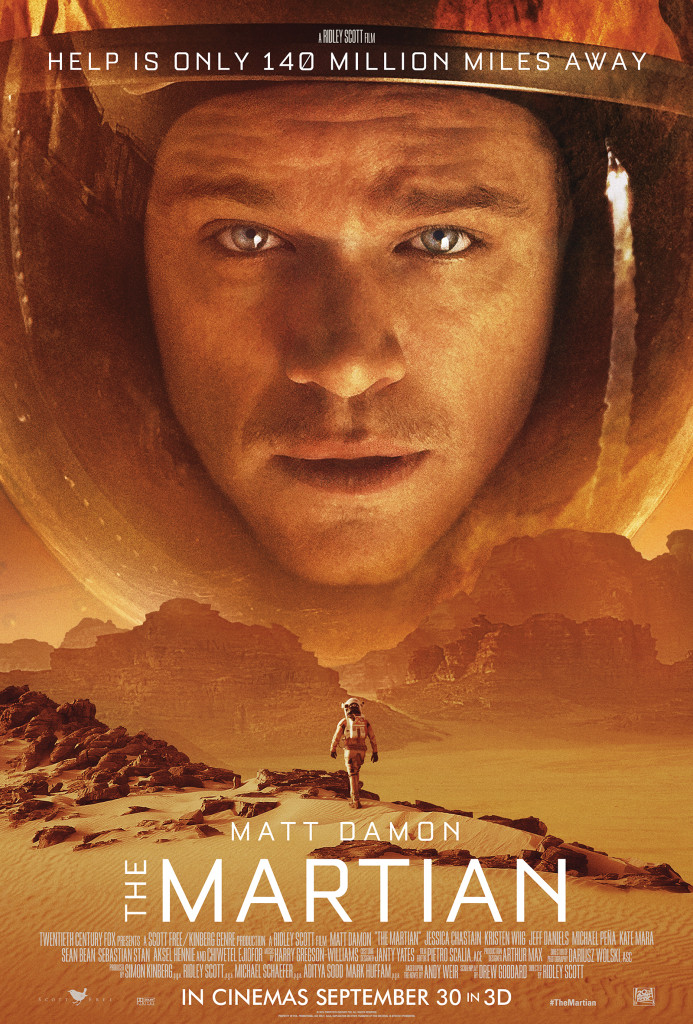
In a nutshell: In the not-too-distant future, astronaut/botanist Mark Watley is accidentally stranded on Mars, and must find a way to stay alive long enough for NASA to send help.
Featuring: The Winter Soldier, Invisible Woman, Boromir, Ant-Man’s kinda offensively stereotypical Latino sidekick, Dr. Strange’s probable nemesis
It’s not The Martian’s fault that it will spend the next year or two serving as the poster child for Category Fraud (when a movie or TV show claims to be a comedy because the “best drama” category seems too hard to win). It isn’t, strictly speaking, a comedy, so the fact that it won “Best Comedy” at the Golden Globes feels hinky. That said… it doesn’t lack humour. For a movie about someone left stranded on a far-away planet, it’s got wit when it wants to, but it also impressively tense when it’s time to put Mark in increased danger.
Matt Damon is excellent. He could easily have carried this entire movie, Castaway-style, but he doesn’t even need to, thanks to equally great work from an all-star supporting cast. No other movie this year has made me think “Awesome, it’s that person” so many times. It’s delightfully pro-science (if, I hear, less so than the book, but that would happen), never dull, sometimes thrilling, and overall incredibly satisfying. It’s hard to think of more to say that wouldn’t just boil down to me reciting my favourite parts. You should probably just watch it if you haven’t already.
2. The Fast and The Furiosa
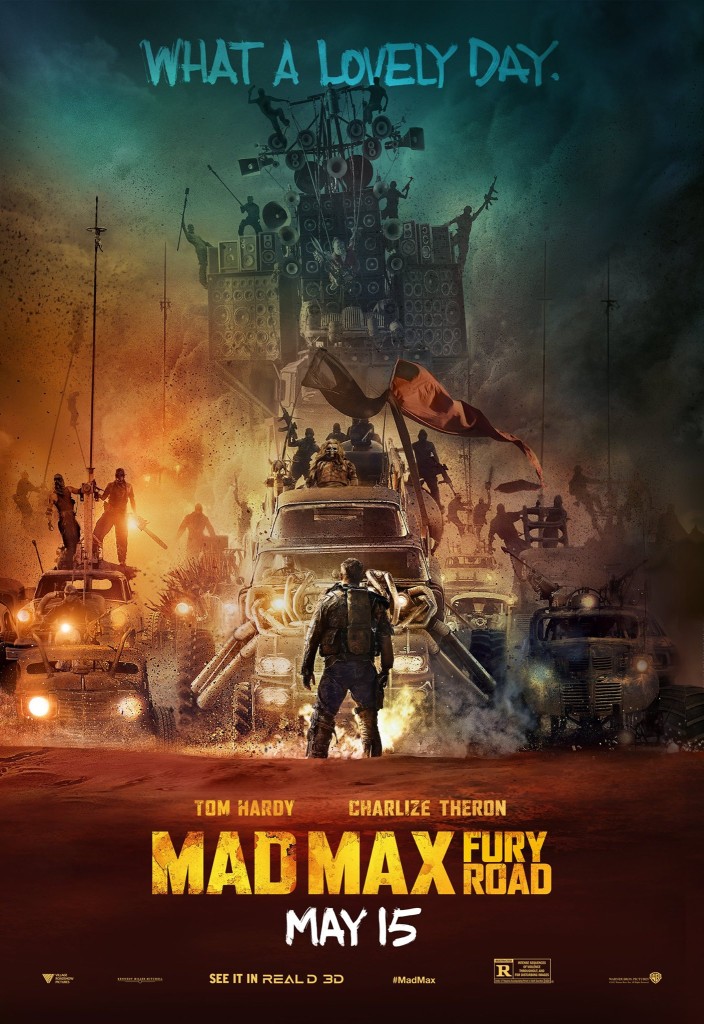
In a nutshell: In a post-apocalyptic future, Imperator Furiosa tries to escape warlord Immortan Joe, bringing along five women he kept as breeding slaves. A road warrior named Max and a Warboy named Nux get dragged along for one awesome, feature length car chase.
Featuring: Bane, Beast
There’s a lot of talk about how out-of-touch the Oscars are. This is mostly aimed at that time they snubbed the Dark Knight in favour of the vastly inferior The Reader, then expanded the best picture category to avoid shunning popular films, but then kept doing it. So sure, it was a surprise when Mad Max: Fury Road started breaking the trend and attracting award buzz. So why this movie?
Because it’s freaking amazing, that’s why.
It’s masterfully shot and edited. It gets strong performances out of not just Charlize Theron and Tom Hardy, but X-Man Nicholas Hoult and supermodel Rosie Huntington-Whitely of all damned people. The action is incredible. The story is above and beyond what a Hollywood blockbuster would go for, despite being so simple that it takes less time to describe than The Revenant. It’s a revival of a thirty-year-old franchise that isn’t weighed down by nostalgia, wink-nudge references, or franchise building.
Every element comes together to create an action movie far, far better than it has any right to be on paper, and that seems to have gotten Awards Season’s attention.
Also it pissed off MRAs, which I find delightful.
1. Extra extra, vows of celibacy screw with your head
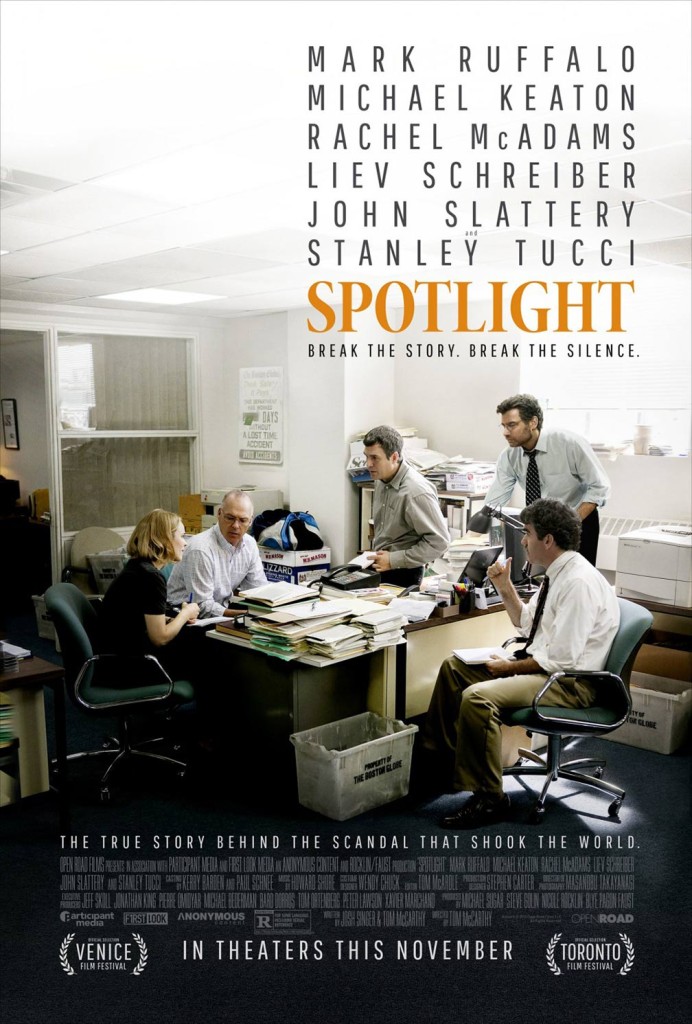
In a nutshell: A period piece set in the long-forgotten time when print journalism made a difference (2001), the Spotlight team at the Boston Globe looks into child abuse accusations inside the Catholic church, and discovers a systemic cover-up bigger than they ever expected.
Featuring: A different Batman, Bruce Banner, Sabretooth, Dr. Erskine, Dr. Manhattan, Old Howard Stark, Dr. Strange’s probable love interest.
Remember journalism, you guys? When men and women employed by newspapers would really dig into a story, doing months of research if necessary, to ensure that the news you were reading was not only important but true? Man those were the days.
Spotlight is the story about how one team of journalists uncovered the story that the heavily Catholic city of Boston did not want told: that priests had been molesting children. For years. Decades. The more they look into it, the more victims they find, and the more extensive the cover-up is revealed to be.
The cast is phenomenal. Michael Keaton, Rachel McAdams, Mark Ruffalo, and more, all doing some incredible work. The horror at the extent of the abuse and cover-up, the determination to put it right, and the gnawing realization that people inside the paper may have helped keep it all quiet once before.
It’s a gripping story, one that manages that trick of injecting suspense into a foregone conclusion. This is a movie I was determined to seek out the moment I saw the trailer, Oscars or no Oscars, and I’m glad I did. Highly recommended.

